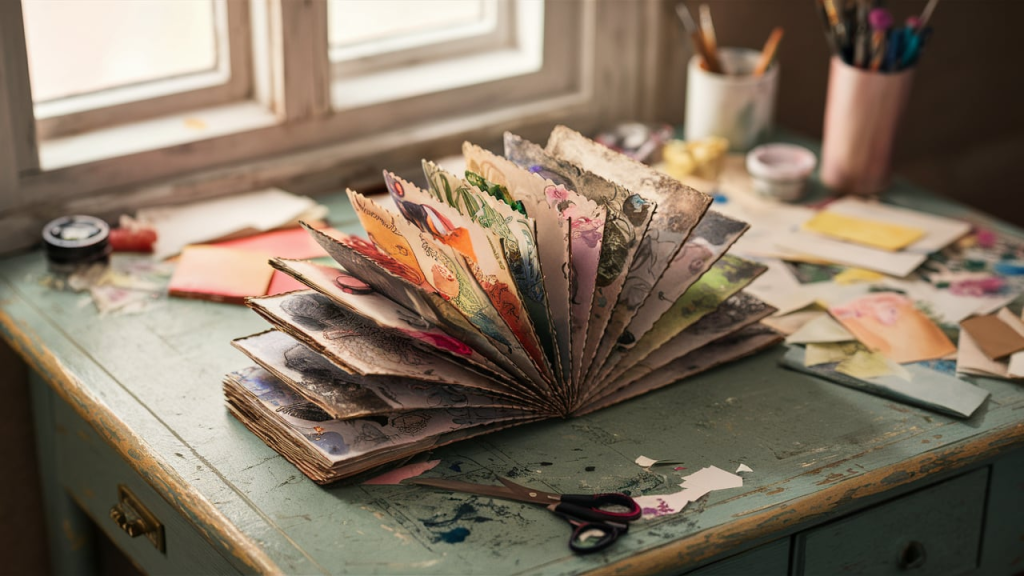Accordion book art is a fun and easy way to make creative books.
These books fold like an accordion, making them great for storytelling, scrapbooking, or art projects. You can use them to write stories, draw pictures, or display photos.
They are simple to make with paper, glue, and basic supplies. This project is great for kids and adults who enjoy crafting.
You can decorate your accordion book in many ways, using markers, stickers, or colored paper.
The best part is that you can make it as simple or detailed as you like.
In this guide, you’ll learn how to create your accordion book step by step. No special skills are needed—just some creativity and a little time.
What Is an Accordion Book?
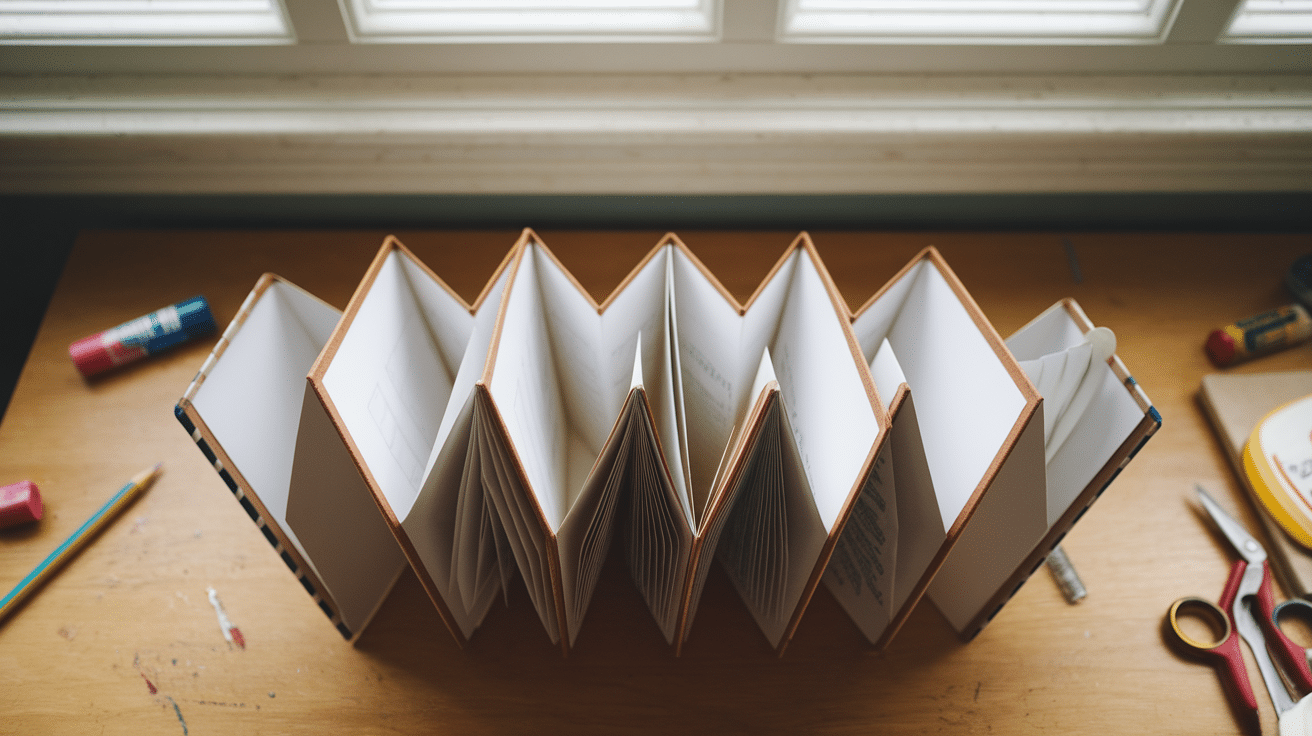
An accordion book is a handmade book made from a single long strip of paper that is folded back and forth, like the bellows of an accordion.
Instead of separate pages bound together like a regular book, the pages of an accordion book are connected by folds.
This type of book has been used for centuries in different cultures. Ancient Chinese and Japanese books often used the accordion-style folding technique; similar books have been found in Mayan and Aztec cultures.
Today, accordion books are used for many creative and artistic projects.
Accordion books can be large or small, simple or detailed. They can hold artwork, poetry, notes, or even be used for educational purposes. Because they open up in a long strip, they are great for displaying content in a continuous flow.
Why Make an Accordion Book?
Accordion books are a great way to be creative and express ideas. They are simple to make and can be used for many different projects.
Unlike regular books, they can be displayed fully opened, making them perfect for showcasing art, photos, or stories.
Making these books is also a great activity for kids, as it helps with creativity and fine motor skills. And, it’s a fun and relaxing craft for anyone who enjoys working with paper.
Different Types of Accordion Books
There are many variations of accordion books. Some are simple, while others have unique designs that add extra creativity to the book. Here are some popular types:
1. Single-Sheet Accordion Book
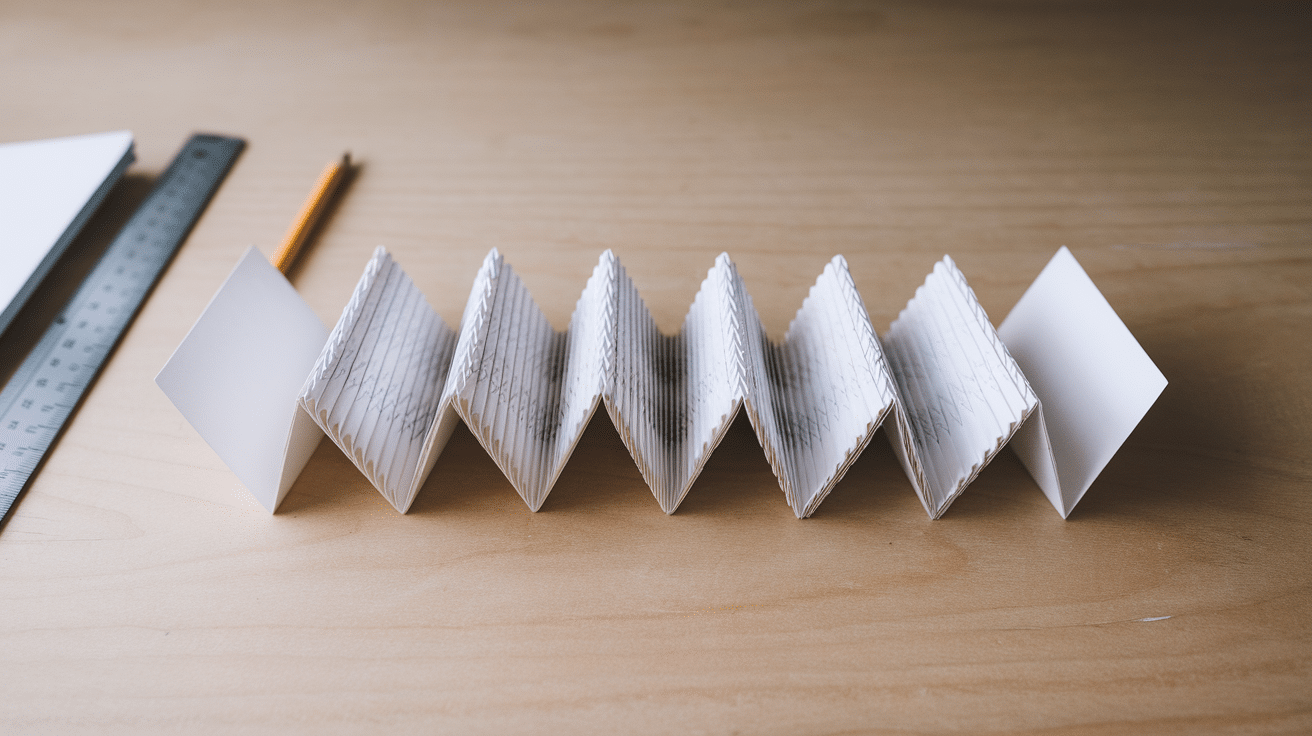
This is the most basic type of accordion book. It is made from one long strip of paper folded back and forth. It has no additional pages or attachments, making it simple and easy to create.
This type is great for quick projects, storytelling, or mini journals.
2. Multi-Page Accordion Book
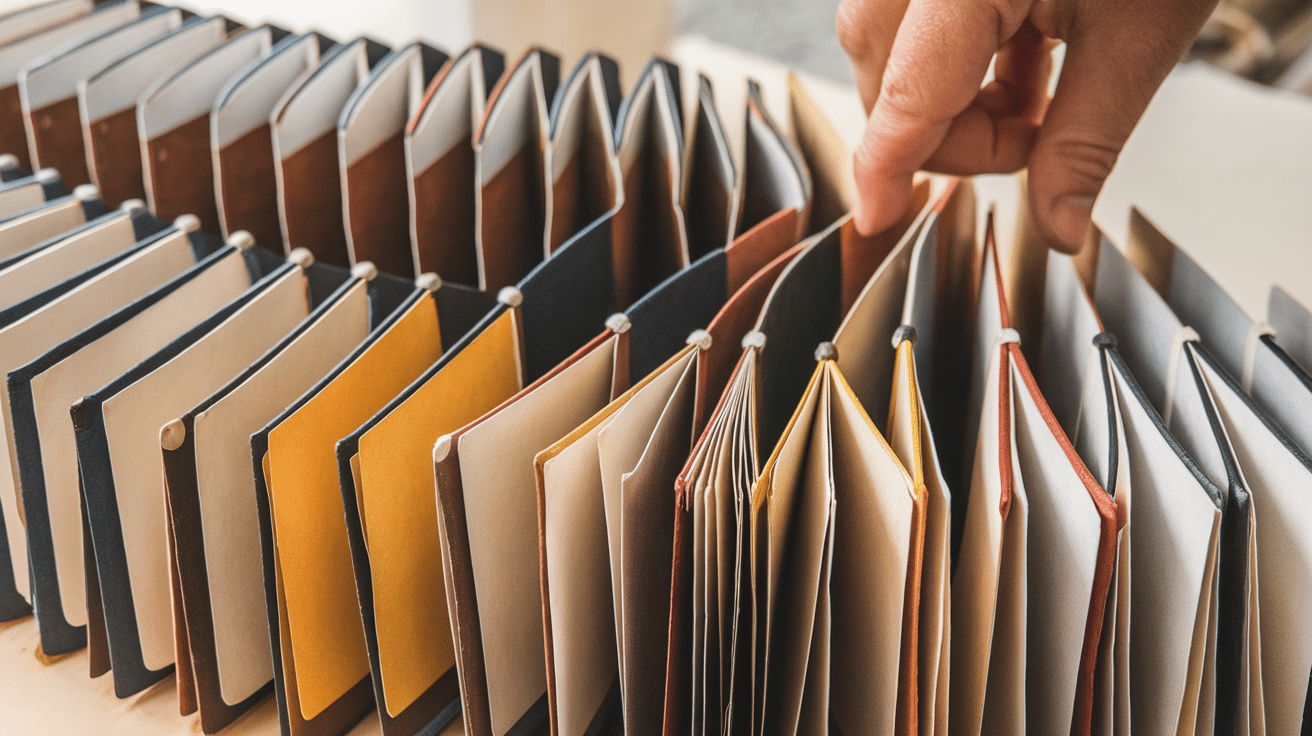
Instead of using one long sheet, this version is created by gluing several pieces of paper together to extend the length of the book. This allows for more pages and flexibility in size.
Multi-page accordion books are great for projects that require more content, such as illustrated stories, scrapbooks, or educational books.
3. Double-Sided Accordion Book
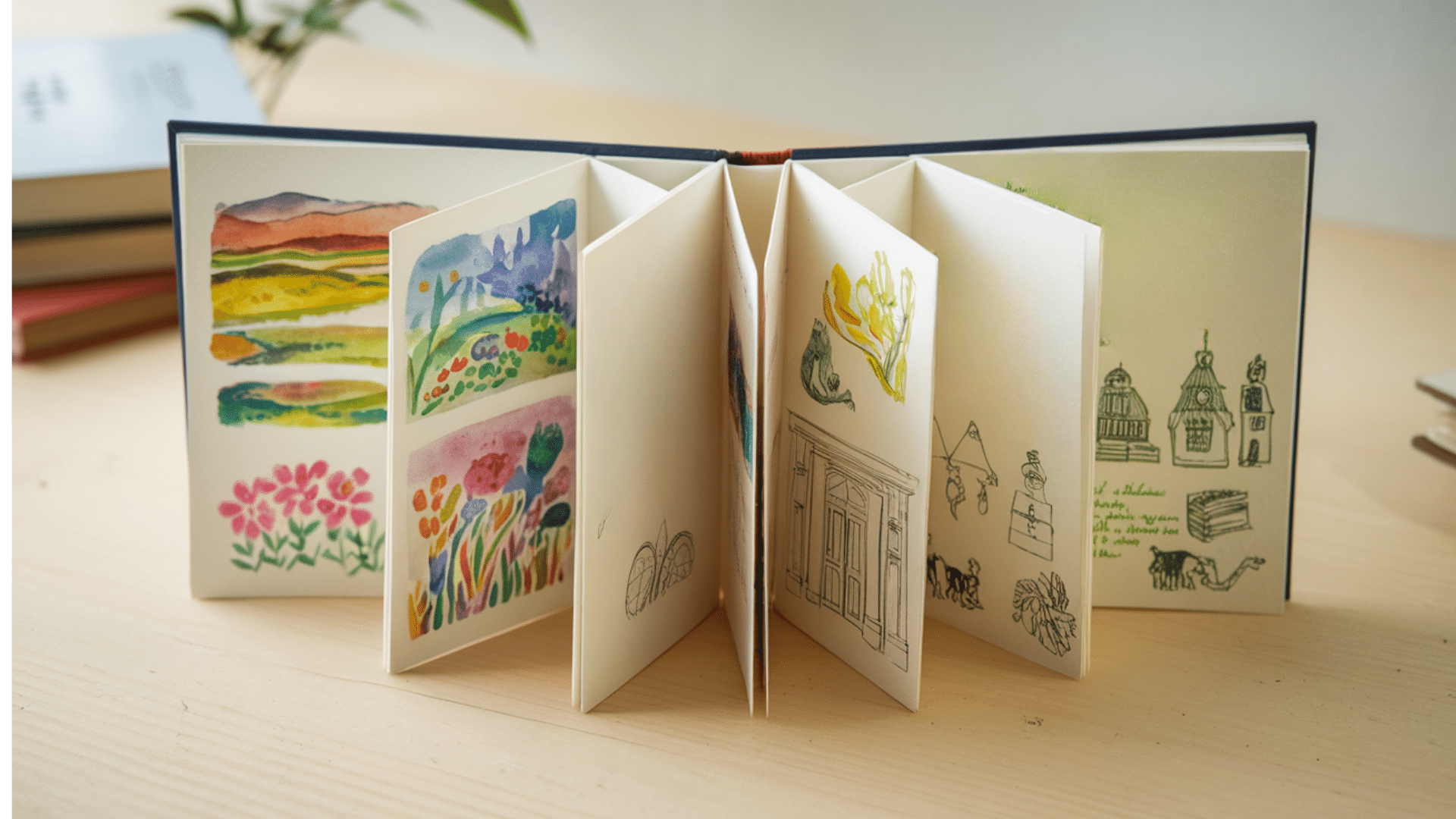
A double-sided accordion book has content on both sides of the pages. This is useful for books that need more space, such as travel journals or art collections.
You can design each side to follow a different theme or create a book that can be flipped and viewed in different ways.
4. Hardcover Accordion Book
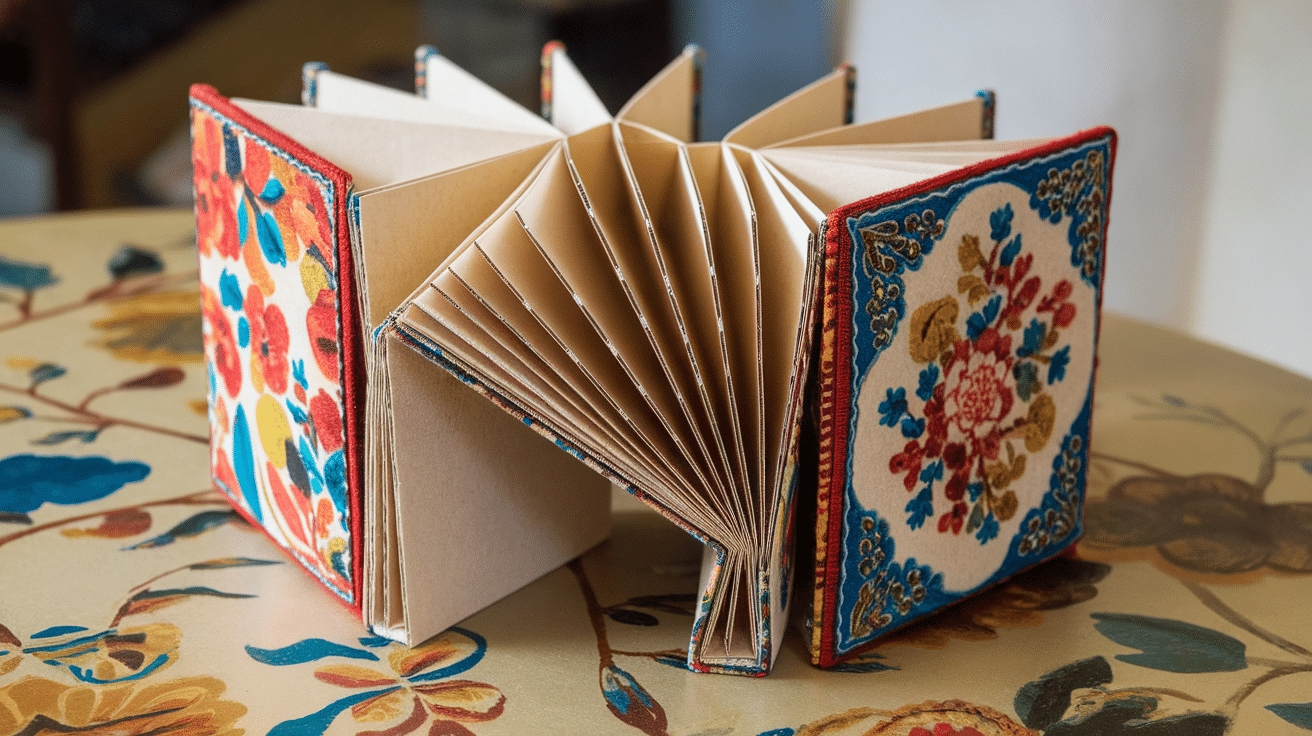
A hardcover accordion book has sturdy covers made from thick cardboard, chipboard, or fabric-covered material. The covers add durability and give the book a more professional look.
These are often used for sketchbooks, photo albums, or keepsake books.
5. Pop-Up Accordion Book
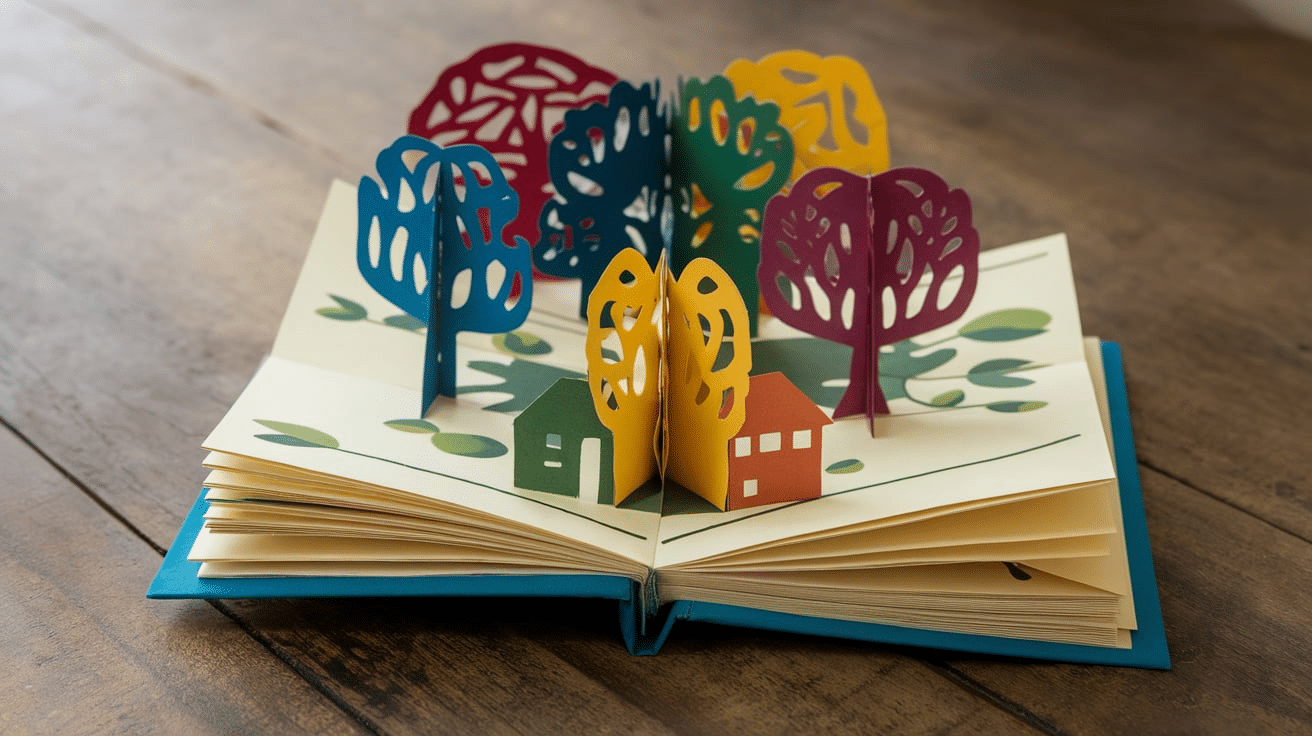
A pop-up accordion book includes 3D elements that fold out when the book is opened. This style is great for children’s books, interactive storytelling, or creative art displays.
Pop-up elements can be attached to pages using folded paper or tabs.
Materials Needed
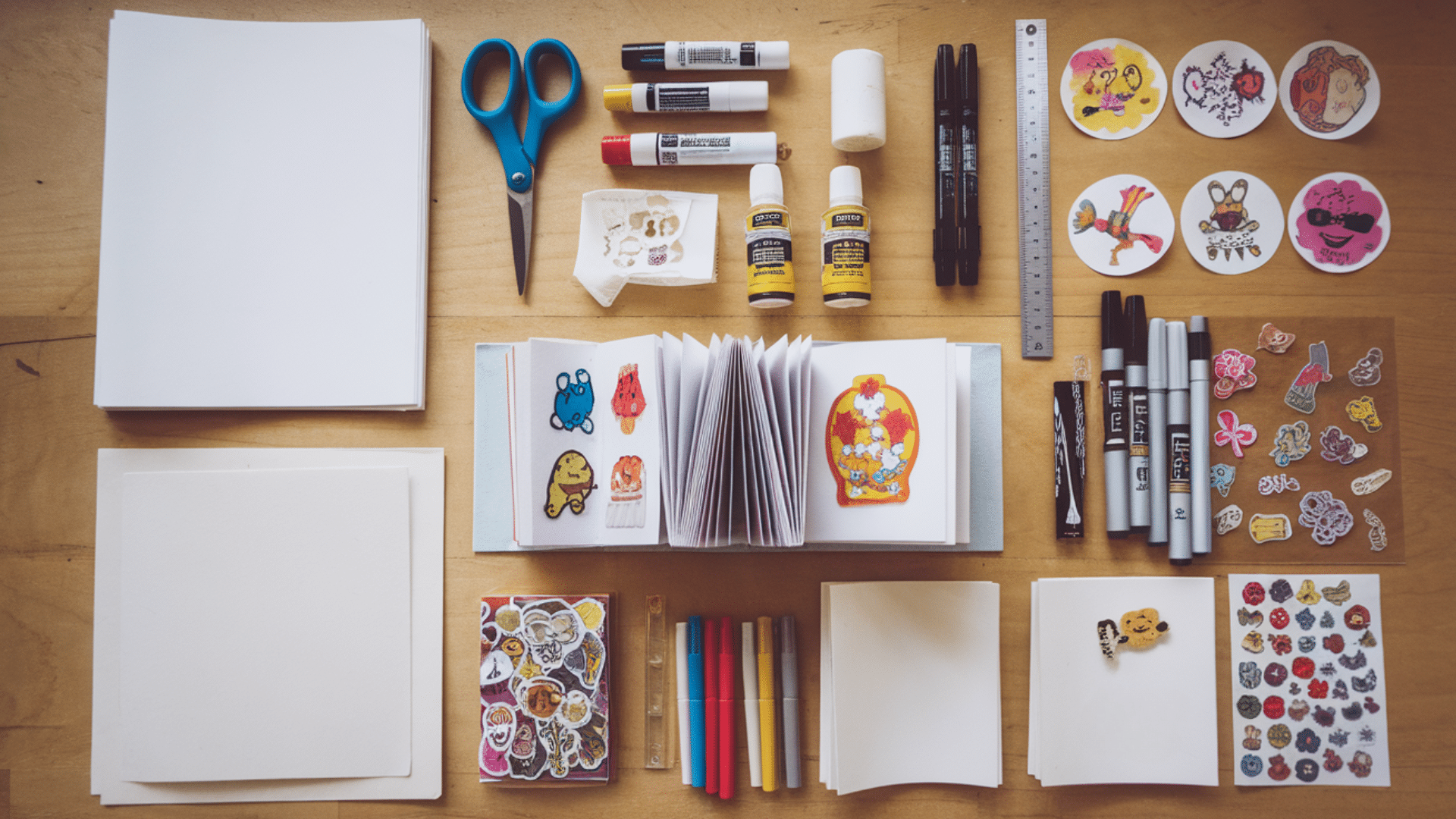
Before you start making an accordion book, gather the necessary materials. The good thing is that you don’t need expensive supplies—many of these items are already available at home or in craft stores.
Basic Materials:
- Paper: Choose thick paper, such as cardstock, watercolor paper, or construction paper, as it holds folds better and lasts longer.
- Scissors or Paper Cutter: Helps cut straight edges and adjust the size of your book.
- Glue Stick or Liquid Glue: Used to attach covers and add decorations.
- Ruler: Ensures equal-sized pages and straight folds.
- Pencil: For marking folds and cutting lines.
Optional Decoration Materials:
- Colored Markers or Pens: To add drawings, doodles, or written content.
- Stickers or Stamps: For extra decoration.
- Scrapbook Paper or Fabric: To create unique covers.
- Washi Tape or Ribbon: For extra style and durability.
Once you have your materials, you can begin making your accordion book!
How to Make an Accordion Book: Step-by-Step Guide
1. Choose and Cut Your Paper
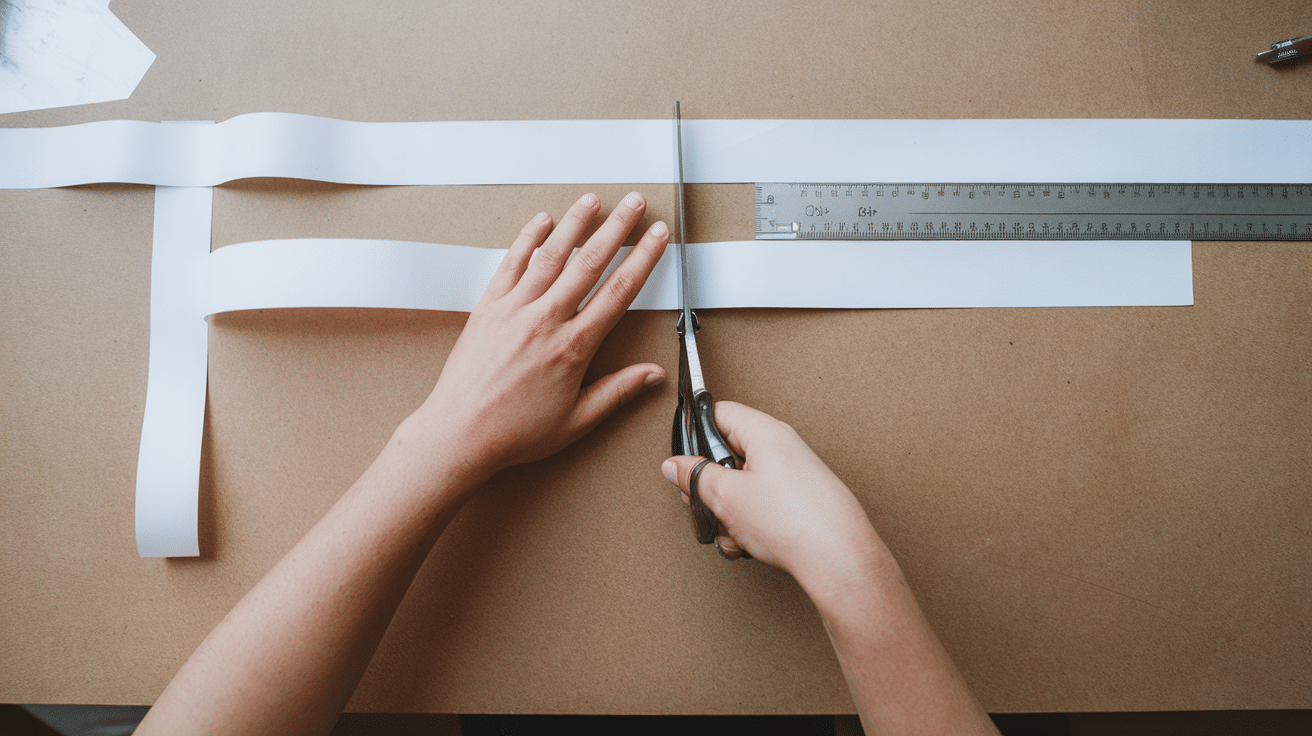
Decide on the size of your accordion book. If you want a small book, cut a strip of paper about 4 inches wide and 24 inches long. For a larger book, you’ll need a longer strip of paper.
If you don’t have a long enough sheet, you can glue multiple sheets together. Just overlap the edges slightly and secure them with glue or washi tape.
2. Measure and Fold the Pages
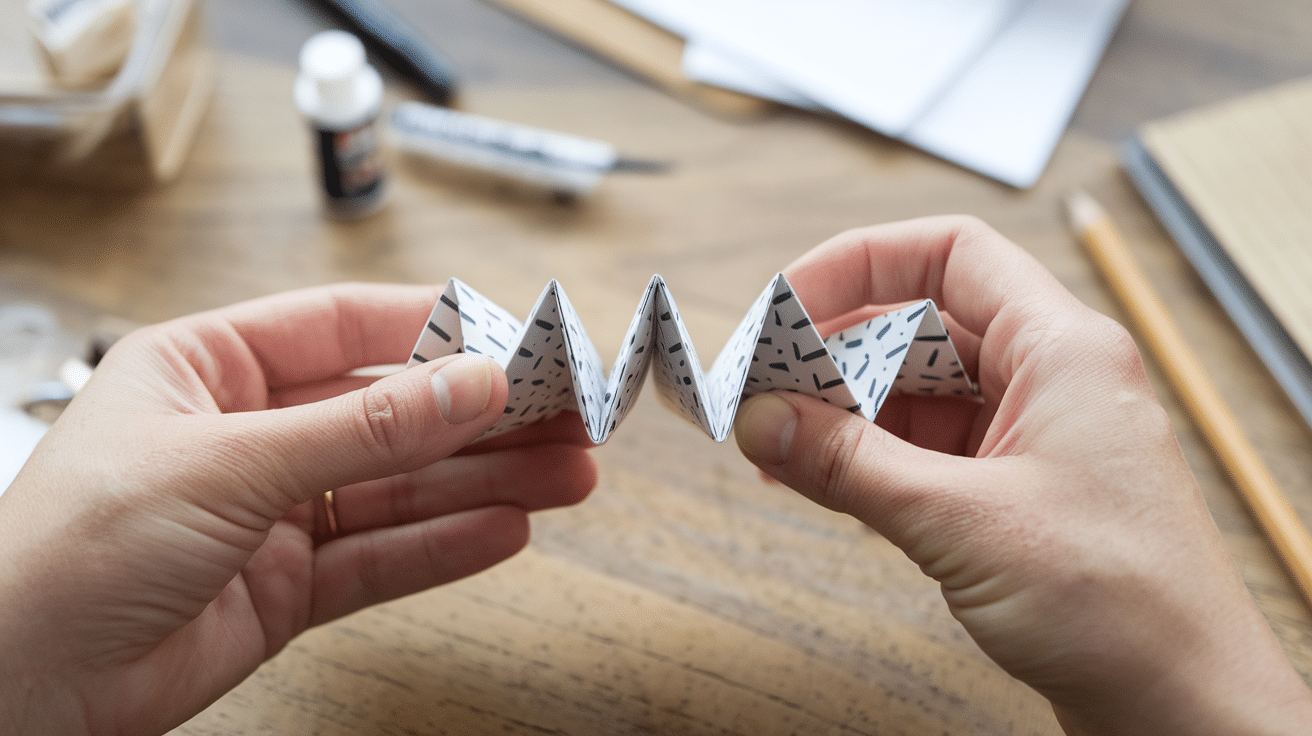
- Use a ruler to divide your strip of paper into equal sections. Each section will be one page of the book.
- Lightly mark where each fold should go with a pencil.
- Fold the paper back and forth in a zig-zag or accordion style. Make sure to press firmly along the creases so that the pages stay in place.
3. Make and Attach the Covers
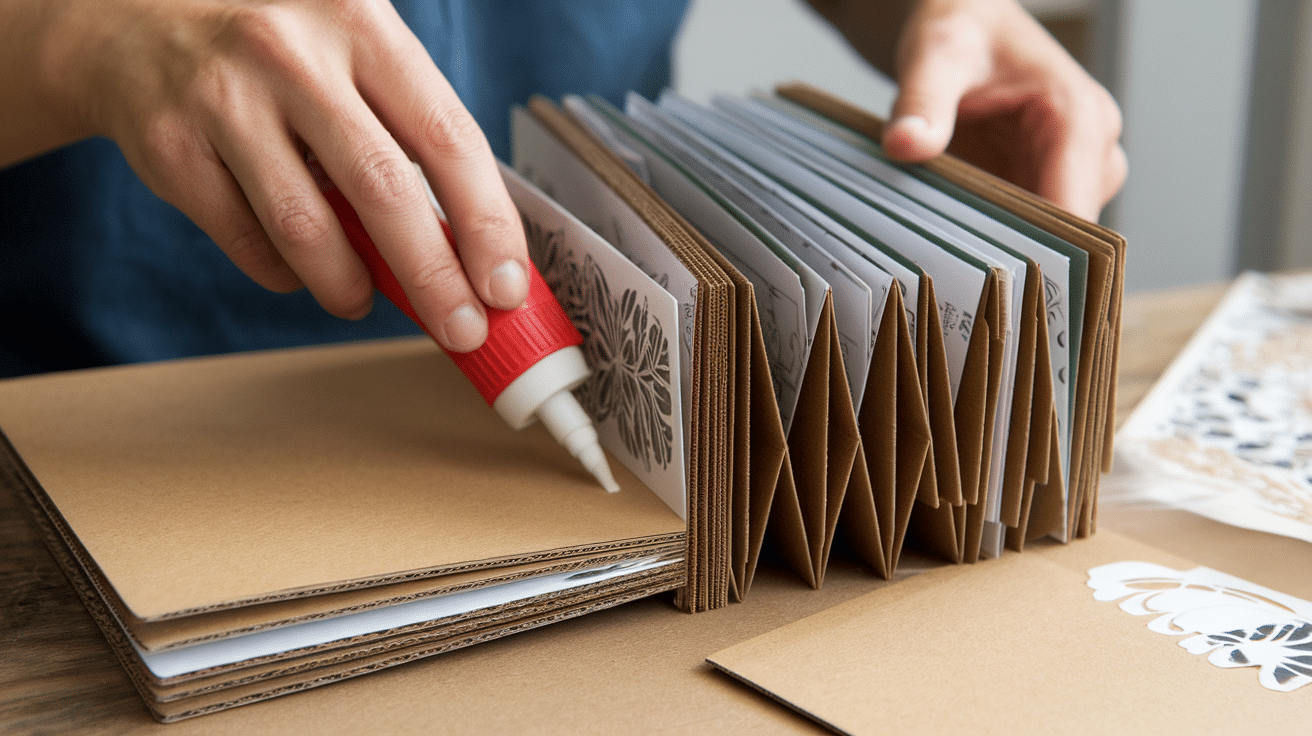
- Cut two pieces of thicker material, like cardboard or heavy cardstock, slightly larger than your pages. This will make your book sturdier and easier to handle.
- Decorate the covers with fabric, patterned paper, or drawings.
- Glue one cover to the first page and the other cover to the last page. Let the glue dry completely before moving to the next step.
4. Add Content
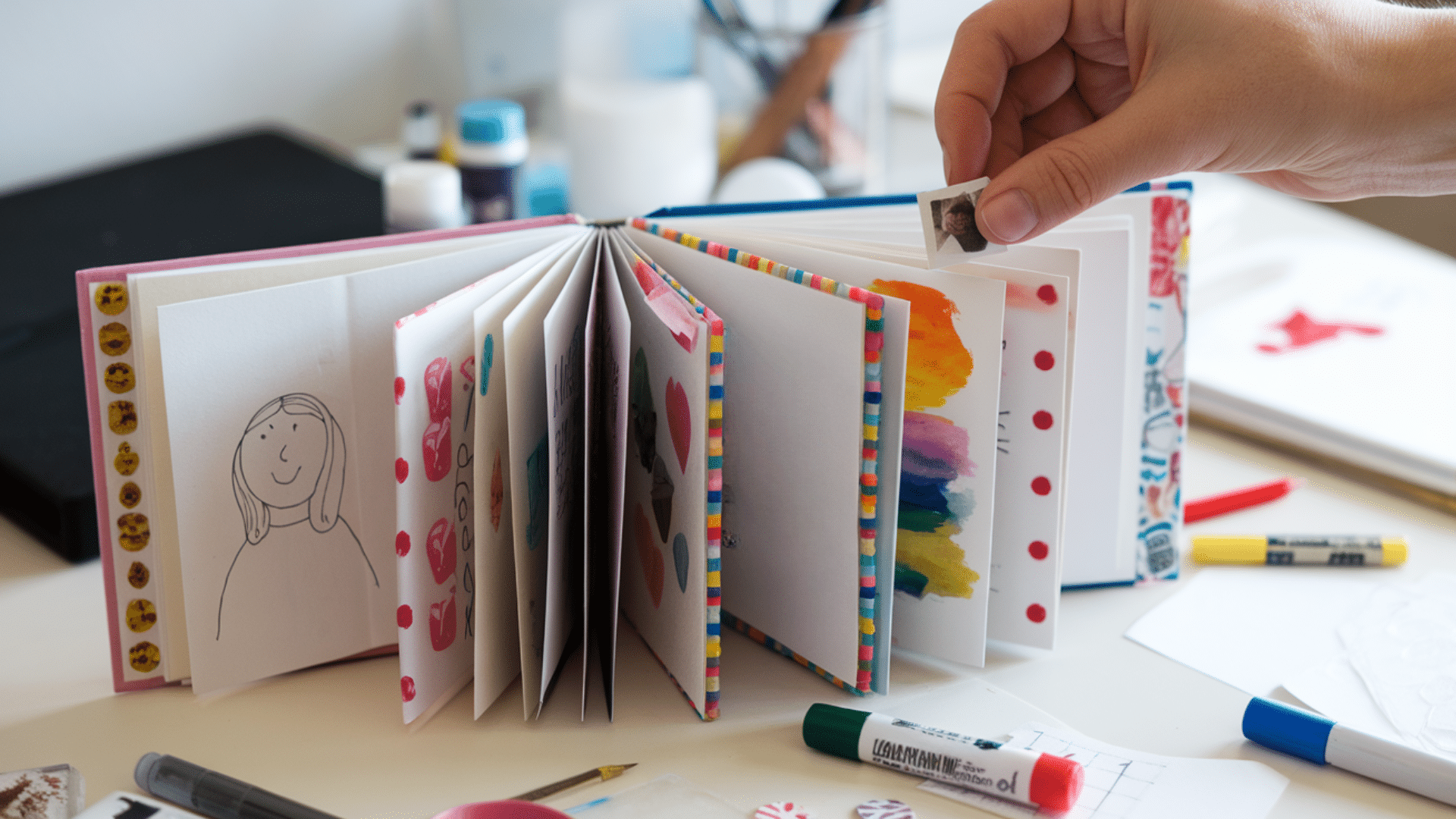
Once your book is folded and has a cover, it’s time to add your creative touch.
- Draw pictures or illustrations on each page.
- Write a short story, poem, or notes.
- Paste photos, magazine cutouts, or scrapbook elements.
- Use stickers, washi tape, or stamps to decorate the pages.
Fun Ways to Use an Accordion Book
There are many ways to use an accordion book. Some of the ideas are:
- Storybook: Write and illustrate a short story, with each page showing a different part of the story.
- Art Journal: Use the pages to draw, paint, or experiment with colors and patterns.
- Photo Album: Glue photos onto the pages and add captions or stickers for a personalized photo book.
- Scrapbook: Collect memories by adding tickets, notes, and small drawings to each page.
- Holiday or Birthday Card: Make a special accordion book for a friend or family member with personal messages and artwork.
- Mini Learning Book: Create a book about animals, space, history, or any other topic with pictures and facts.
- Poetry or Quote Book: Fill the pages with your favorite poems, quotes, or short stories.
Tips for Making Your Accordion Book Special
- Experiment with shapes: Try a circular or zig-zag edge instead of a rectangle.
- Mix materials: Use fabric, foil, or textured paper to add more dimension.
- Try different sizes: Make tiny books or large display books.
- Use both sides: Decorate both sides for a book that can be flipped and viewed differently.
Common Mistakes and How to Fix Them
- Uneven Pages: If some pages are larger than others, trim the edges carefully with scissors or a paper cutter.
- Weak Folds: Press down each fold firmly and use a ruler to keep the lines straight.
- Loose Covers: If the covers are not sticking well, add more glue and press down until they hold.
- Paper Tears: Use strong paper to avoid ripping. If a tear happens, patch it with tape or glue.
Conclusion
Accordion books are a fun and creative way to make handmade books. They are easy to fold, design, and decorate. You can create a book that tells a story, displays artwork, or holds special memories with just a few materials.
These books are perfect for kids, adults, and anyone who enjoys crafting.
There are many types of accordion books to explore. Some are simple, while others have added elements like pop-ups, pockets, or layers. You can make them small for quick projects or large for detailed work.
No matter the style, each accordion book has its own charm.
This craft is also a great way to express ideas. You can use bright colors, textured papers, or personal touches to make each book unique.
Try making your own accordion book today. Experiment with different designs and decorations. Enjoy the process, and have fun bringing your ideas to life.
Frequently Asked Questions
What’s the difference between an accordion book and a regular book?
Accordion books are folded in a zig-zag style instead of having bound pages. They can be displayed fully opened, making them great for creative projects.
What size should my accordion book be?
The size depends on your project. Small books (4×6 inches) are great for notes, while larger ones (8×10 inches or more) work well for art or display.
How can I add a pop-up feature to my accordion book?
Cut out small paper shapes and attach them with folded tabs. When the book opens, the shapes will stand up like a pop-up card.
Can I use recycled materials for an accordion book?
Absolutely! Old magazines, scrap paper, and fabric scraps can add a unique touch to your book while reducing waste.


